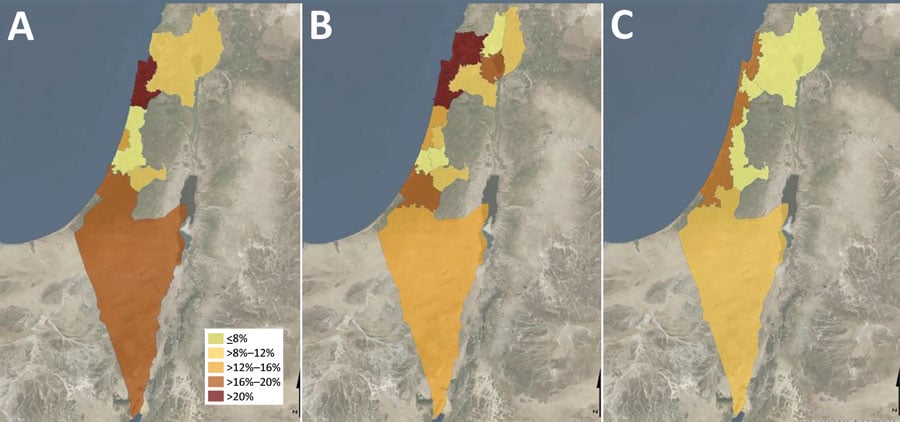Volume 30, Number 5—May 2024
Research
Cross-Sectional Study of Q Fever Seroprevalence among Blood Donors, Israel, 2021
Figure

Figure. Q fever prevalence by district, subdistrict, and natural region in cross-sectional study of seroprevalence among blood donors, Israel, 2021. Spatial distribution of Q fever seroprevalence uses different geographic classifications. A) Seroprevalence rates by district; the highest rate was in Haifa district. B) Seroprevalence rates by subdistrict; the highest rate was in Hadera subdistrict. C) Seroprevalence rates by 4 natural region clusters; the highest rate was in the coastal plain area.
1These authors contributed equally to this article.
Page created: March 07, 2024
Page updated: April 23, 2024
Page reviewed: April 23, 2024
The conclusions, findings, and opinions expressed by authors contributing to this journal do not necessarily reflect the official position of the U.S. Department of Health and Human Services, the Public Health Service, the Centers for Disease Control and Prevention, or the authors' affiliated institutions. Use of trade names is for identification only and does not imply endorsement by any of the groups named above.